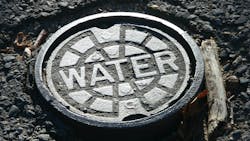N.Y. announces $62M for wastewater, drinking water improvements
New York State officials have announced more than $62 million in funding for critical wastewater and drinking water system improvements.
The short-term financing packages will provide the capital needed by two municipalities and a public authority to undertake their water infrastructure construction projects with estimated total costs of over $84 million, to protect public health and the environment.
"This funding is critical to supporting New York's water quality goals by providing local communities with resources to upgrade and maintain critical wastewater and drinking water systems," Governor Kathy Hochul said. "My administration is committed to collaborating with our partners in local government to ensure communities of all sizes can invest in water infrastructure, sparking job creation and economic growth while protecting public health and improving quality of life in these communities."
The funds include financings through the Clean Water State Revolving Fund (CWSRF) and Drinking Water State Revolving Fund (DWSRF) and grants already awarded through to the Water Infrastructure Improvement (WIIA) grants program.
Two wastewater projects won grant and financing packages:
- Buffalo Sewer Authority in Erie County - $45.9 million to upgrade the secondary treatment system at the Bird Island Wastewater Treatment Plant. The grant and financing package includes $9,054,768 in WIIA grant, $9,054,768 in federal grant or loan forgiveness, $19,901,107 in short-term, interest-free financing, and $7,837,947 in short-term, market-rate financing.
- Washington County - $1,630,400 WIIA grant and $12,836,201 in short-term, interest-free financing to upgrade the Sewer District No. 2 wastewater treatment plant.
A $1,710,000 WIIA grant was also approved for the City of Yonkers in Westchester County. The grant will support an approximately $2.7 million drinking water project to install 2,000 linear feet of water main and related fixtures along Warburton Avenue, Lamartine Avenue and Ashburton Avenue to interconnect the city's high- and low-pressure zones.
